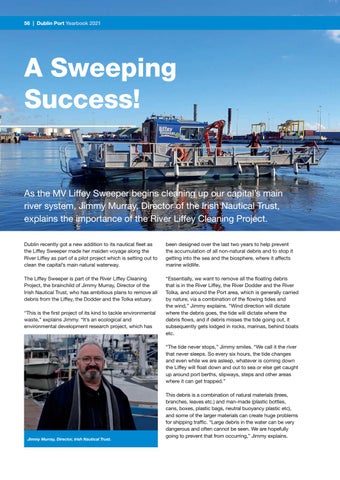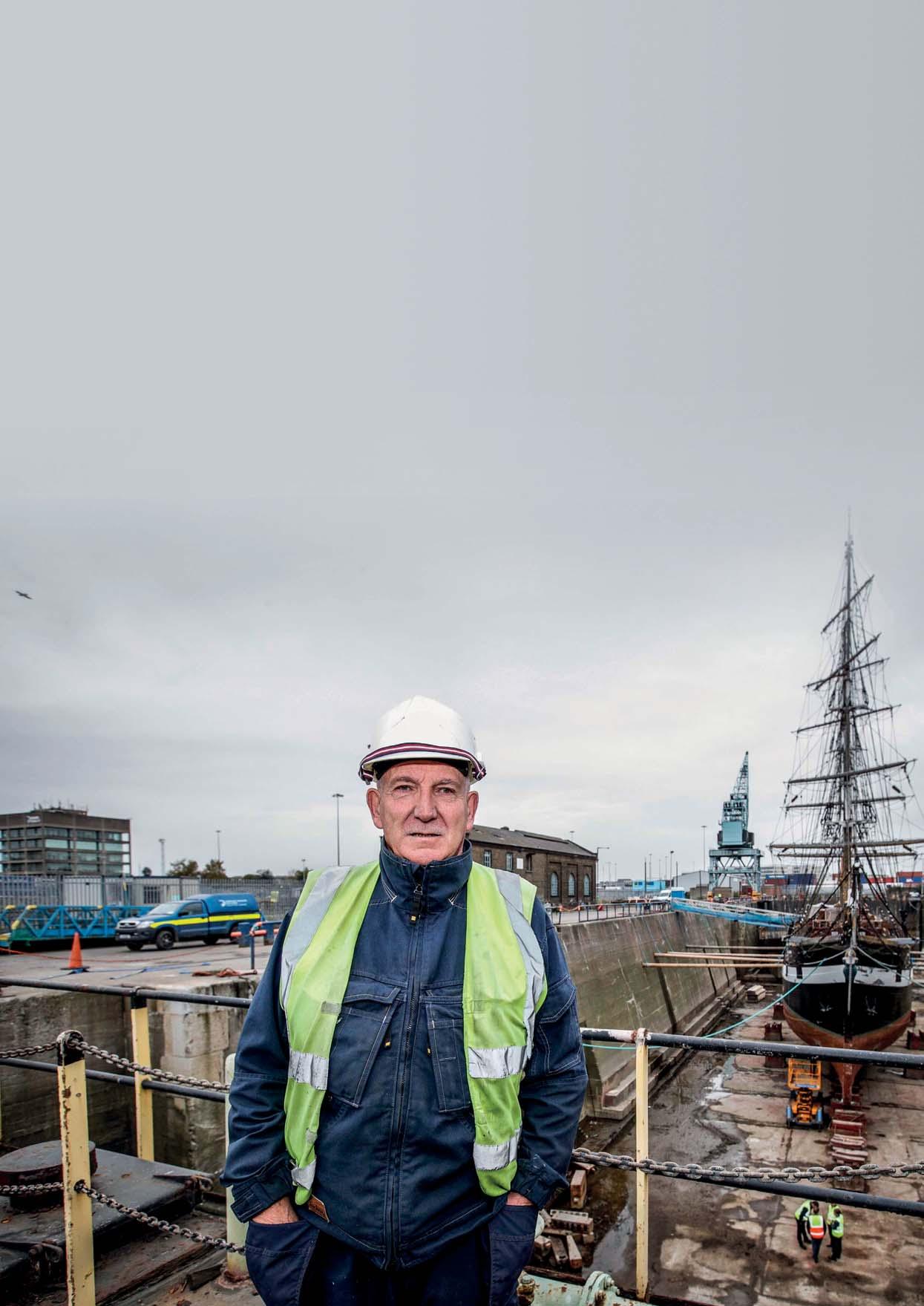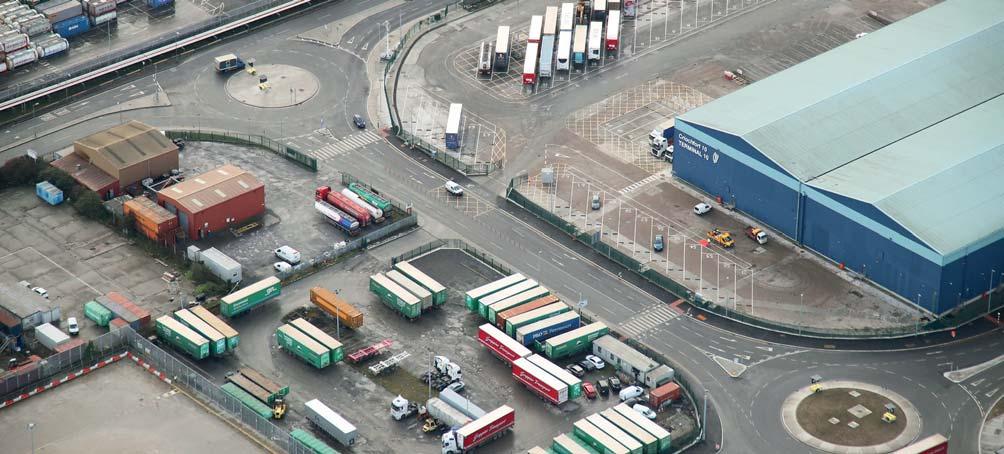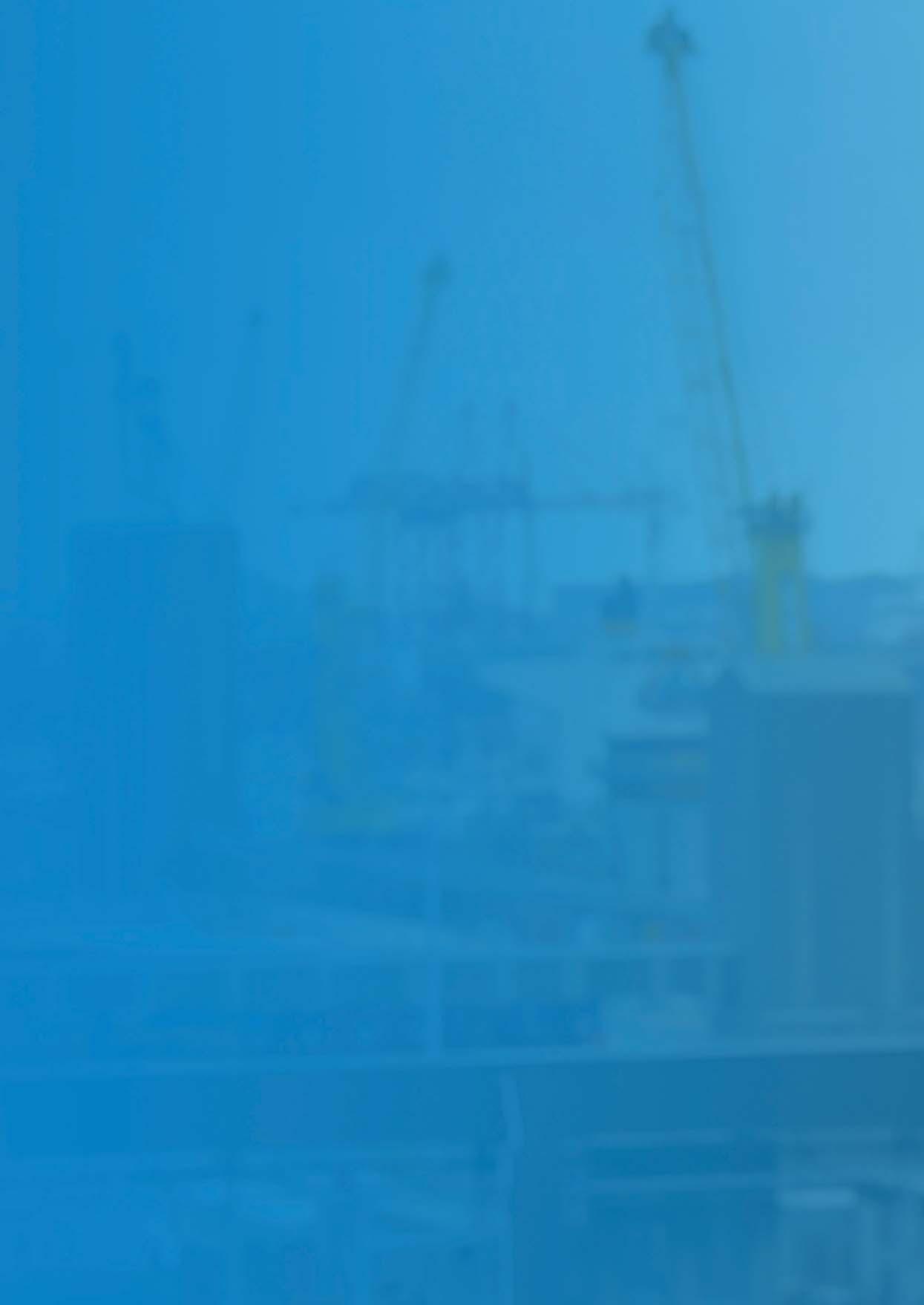56 | Dublin Port Yearbook 2021
A Sweeping Success!
As the MV Liffey Sweeper begins cleaning up our capital’s main river system, Jimmy Murray, Director of the Irish Nautical Trust, explains the importance of the River Liffey Cleaning Project. Dublin recently got a new addition to its nautical fleet as the Liffey Sweeper made her maiden voyage along the River Liffey as part of a pilot project which is setting out to clean the capital’s main natural waterway.
been designed over the last two years to help prevent the accumulation of all non-natural debris and to stop it getting into the sea and the biosphere, where it affects marine wildlife.
The Liffey Sweeper is part of the River Liffey Cleaning Project, the brainchild of Jimmy Murray, Director of the Irish Nautical Trust, who has ambitious plans to remove all debris from the Liffey, the Dodder and the Tolka estuary.
“Essentially, we want to remove all the floating debris that is in the River Liffey, the River Dodder and the River Tolka, and around the Port area, which is generally carried by nature, via a combination of the flowing tides and the wind,” Jimmy explains. “Wind direction will dictate where the debris goes, the tide will dictate where the debris flows, and if debris misses the tide going out, it subsequently gets lodged in rocks, marinas, behind boats etc.
“This is the first project of its kind to tackle environmental waste,” explains Jimmy. “It’s an ecological and environmental development research project, which has
“The tide never stops,” Jimmy smiles. “We call it the river that never sleeps. So every six hours, the tide changes and even while we are asleep, whatever is coming down the Liffey will float down and out to sea or else get caught up around port berths, slipways, steps and other areas where it can get trapped.”
Jimmy Murray, Director, Irish Nautical Trust.
This debris is a combination of natural materials (trees, branches, leaves etc.) and man-made (plastic bottles, cans, boxes, plastic bags, neutral buoyancy plastic etc), and some of the larger materials can create huge problems for shipping traffic. “Large debris in the water can be very dangerous and often cannot be seen. We are hopefully going to prevent that from occurring,” Jimmy explains.

















